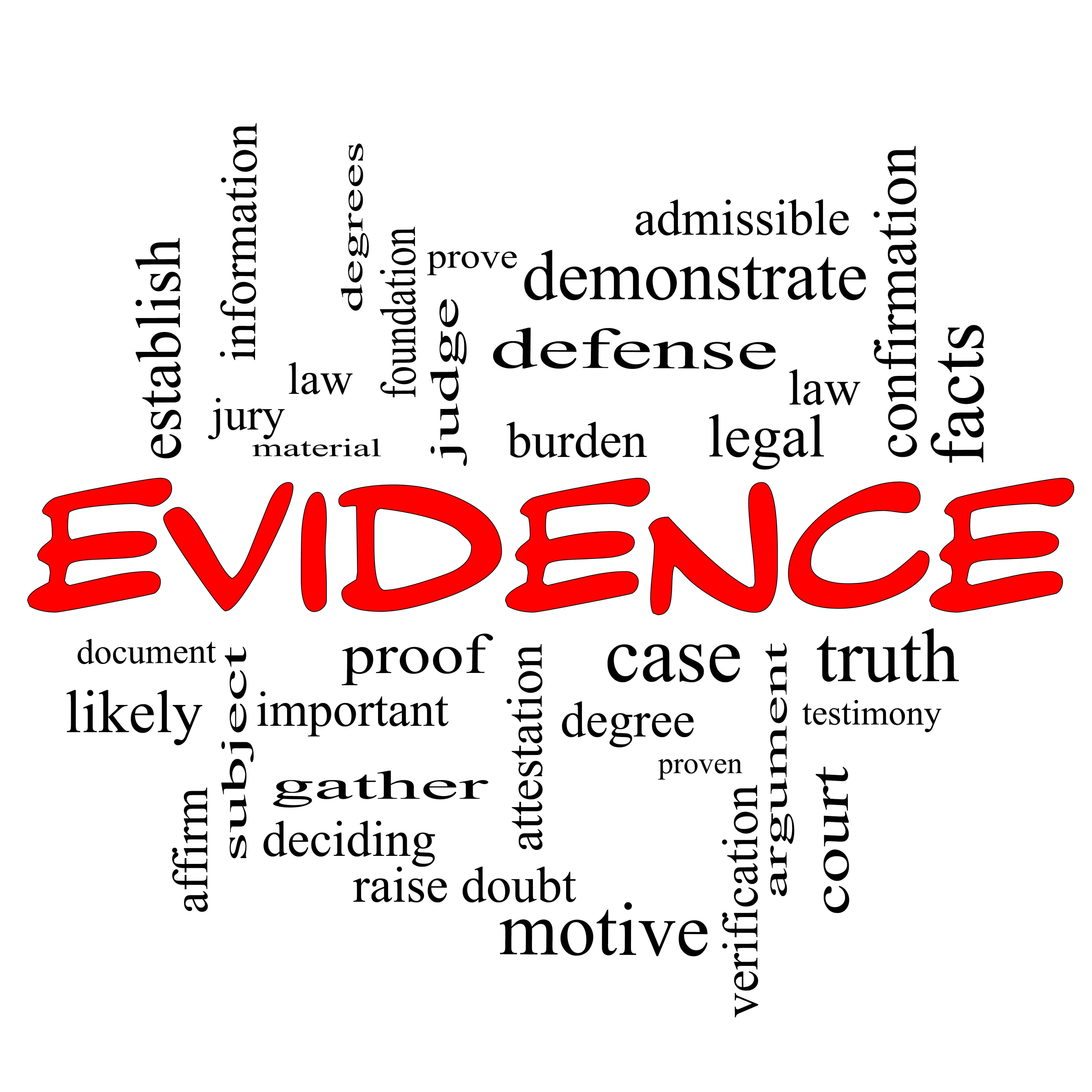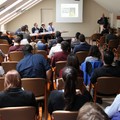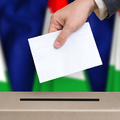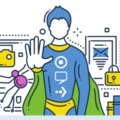What does the Bible have to do with the exclusion of evidence? While the question might sound perplexing, the answer is simple. The “fruit of the poisonous tree” is tainted, therefore it is forbidden. Whomever offers it, shall be cast out of Eden. The Eden of the courtroom. In the following, we shall look at how America views this Eden, and what American courts and scholars consider the fruits of the poisonous tree and how they categorize evidence in violation of the rights of others.

What?
Picking up where we left off the last time in Part I., at first, we should look at the general typology and systemic organization of the “tainted” fruit of the poisonous tree, i.e. evidence produced or obtained in violation of the rights of others. We examine this typology based on the American experience, as US jurisprudence and academic literature disserted most extensively on the issue since the late 1870s.
Bear in mind, that to some extent our survey remained a historical venture since in the past 25 years there is not a considerable amount of scientific literature on the application of the exclusionary rule’s rationale to civil cases and to the exclusion of evidence gathered by the violation of one’s rights by private parties. Recent American literature mainly focuses on the criminal procedure aspects relevant to the Fourth Amendment, which is considered the stronghold of privacy protections in the US constitutions, so in this sense, nonetheless, it is analogically useful for our comparative inquiry. [1] It is more than likely that on the federal level they consider the debate to be obsolete. States have a much greater margin of appreciation and legal and constitutional room for maneuver in this respect; there are states that even created so-called constitutional privacy regulations as opposed to the federal constitution, which is silent on the issue with the exception of interpretive SCOTUS jurisprudence. Regardless, we can draw very important conclusions in comparative terms from the survey of American academic literature between 1920 and 1990.
It was Wilkes, who in our view provided for the most comprehensive typology of evidence in violation of one’s rights, in 1975. [2] In his essay at hand, he analyzed the historical and comparative criticism and counterarguments against the exclusionary rule in contemporary jurisprudence. He was of the opinion that we can make very important distinctions between the different types of evidence subject to exclusion based on the exclusionary rule we apply against them:
- Irregularly obtained evidence can be divided into two groups: (a) improperly obtained, through violation of right or privilege, (b) unfairly obtained, through violation of moral or ethical principles.
- Improperly obtained evidence then can be (a) obtained by an agent of the state or government (i.e. authority), and (b) wrongfully, by a private party, through violation of legal norms of torts, contracts or criminal law.
Wilkes then further divides the groups of evidence obtained through violation of rights by government or private party into two groups:
- Evidence obtained by a government agent can then be: (a) illegally obtained, i.e. in violation of constitutional norms against unreasonable search and seizure, or (b) unlawfully obtained, i.e. in violation of the (common law) statutory authority (i.e. authorization) of the agent
- Evidence obtained by a private party in violation of rights can be: (a) in violation of provisions of criminal law, or (b) in violation of a contractual obligation or a tort. (Here, it is noteworthy that given the specificities of the American human rights protection system based on the constitution, SCOTUS has many times declared in criminal cases that any evidence gathered by private parties not affiliated with government is admissible, [3] and in civil cases court jurisprudence is highly controversial on the issue both on the federal and on the state level. [4])

We think that Wilkes’ typology is undoubtedly pace-setting in any further comparative investigation of possible constitutional transplants in terms of the exclusion of evidence in European systems, first in order to understand the dimensions of such comparative task, and second because it operates mostly with notions and terms that are manageable and operational in Europe and in continental legal systems as well.
Below, we shall only focus on the distinguished group of evidence gathered by private parties in violation of the rights of others, with the clarification that in terms of the specificities of continental legal thinking, we cannot disregard the fact that the conduct of private parties can also amount to a violation of the constitutional guarantees of privacy, through the violation of the respective fundamental rights protecting privacy on the level of the constitution. (We therefore look at Wilkes’ typology with this addition in terms of the evidentiary complexities of continental civil procedure.)
Following the basic typology based on the American experience, we can also look to foreign cases and constitutional texts as a second source of inspiration regarding possible constitutional transplants.
How?
In one of his essay in 2015, Mike Madden disserts on the specifics of a model American exclusionary rule by stating:
“However, the overwhelming majority of current legal scholarship dealing with exclusionary rules either fails altogether to consider why exclusionary rules exist in the first place, or accepts without question the proffered rationale for a given exclusionary rule that has been supplied by a high court in a particular jurisdiction. In other words, scholars tend to uncritically accept the status quo when it comes to asking what an exclusionary rule should do, and then proceed to comment upon how a given rule is or is not efficient in achieving the purpose that they have unquestioningly accepted.”[5]
According to Madden, this type of criticism most of the time disregards the most important questions, which he summarizes as follows:
- What happens if the rationale or explanation of the exclusionary rule is insufficiently well-founded?
- What happens when the high court establishing the rule has incorrectly or incompletely justified the explanation of the rule? [6]
Therefore, in order to avoid the problematic issues mentioned by Madden arising out of the case-by-case examination of exclusionary rules based on court jurisprudence, we should rather look at foreign constitutional and/or procedural solutions that “take care” of the issue. These above-mentioned solutions, however, must be based on certain theoretical foundations and on considerations of legal policy, so now we shall look at some more American cases, which identify the main theoretical and policy reasons behind the introduction of the exclusionary rule.
According to the most part of the 1980s literature, the established practice of the exclusionary rule in civil cases was that all evidence that has been gathered through violation of privacy by private parties acting in an unofficial capacity (i.e. not as part of an agency) has been declared admissible. The reason behind this was that contemporary judicial practice (and some of the supporting literature) assumed that the primary goal of the exclusionary rule is not to restrain non-government actors from unlawful conduct, but to limit the opportunity of government to violate individual fundamental rights. (The seeds of this approach can obviously be traced back to the origins of the American constitutional system, whereby the population of the colonies, following their schism with the Crown saw the ultimate guarantees of their innate and inalienable rights in limiting government and government action as much as possible.)
All in all, the three basic approaches to the exclusionary rule can be summarized as follows: [7]
- Firstly, it can be interpreted as such judge-made law that promotes the enforcement of the privacy guarantees derived from the Fourth Amendment (i.e. it is a procedural guarantee, serving primarily the reinforcement of judicial integrity)
- Secondly, in the form of exclusion, can be interpreted in as a constitutional right, in which case no court or constitutional legislator can change its content. (In other words: in this sense it is a constitutional privilege, being the most important guarantee for subjective, individual rights.)
- Thirdly, if we do not consider exclusion amounting to a separate and specific constitutional rights, but a means of remedy against violations of the Fourth Amendment (primarily to restrain official misconduct, malfeasance and abuse of power), then it is possible that the courts and constitutional legislator “have a say” about its exact content.
Based on their respective reasons in legal policy, the above three approaches can be distinguished as follows, in accordance with Madden’s work: [8]
- Based on the condonation (or dissociation) rationale serves to protect and reinforce judicial integrity and impartiality, in other words, the most basic values of a fair trial (or procedural due process in the American terminology.)
- Based on the corrective justice rationale, the exclusionary rule becomes an important guarantee of individual rights through compensation for the violation. Therefore, from the above classification it can be classified into the second, but into the third due to its remedial function. (In the Hungarian context, Gácsi [9] calls this the rationale of corrective or restorative justice, but in the present context, the compensation rationale seems more appropriate.)
- Based on the deterrence rationale the exclusionary rule is applied as a remedial measure, which intends to repress government misconduct, not by merely refusing it, but also by redressing the harm caused.
- Based on the vindication rationale, the application of the rule is positioned somewhere between the corrective and the deterring rationale, while focusing on constitutional values, not on the violation of the individual right strictu sensu. (In accordance with this theory there is no need for a causal link between the harm suffered as a result of the violation and the remedy applied as part of the procedure, as remedies can also be quasi symbolic, i.e. not resulting in the actual compensation of the injured party, but purporting the enforcement of an individual right in a broader sense (by recognizing and remedying the violation of one’s individual rights). This means that this rationale also serves community purposes in a broader sense, i.e. the public interest. (In this sense, this policy rationale can be identified as “forward-looking”, although the American scholars studied do not explicitly argue this.)
On a temporal level, whether an exclusionary rule is forward or backward looking, there are two distinctions to be made, according to Madden: [10]
- Forward-looking exclusion rests on the premise that it is not the compensation of the injury itself that should be in the focus, but mapping out the possible and foreseeable effects of exclusion on the conduct of the proceedings as a whole. This group then might include any exclusion based on the deterrence or condonation rationales.
- Backward-looking exclusion, in turn, is rather focused on compensating the effects of the actual violation than on mapping out possible effects on the administration of justice in the long term. As a result, any exclusion based on the compensation and vindication rationale can be categorized into this group.
United States v. Calandra (414 U.S. 338, 1974) is accounted for as a landmark in SCOTUS exclusion jurisprudence, and therein the Court argued that the exclusionary rule was never interpreted in a way that it can be used as a blanket excuse by anyone, prohibiting the use of any unlawfully obtained evidence in any case. (It is especially due to this that following Calandra, new tailor-made exceptions have been created from under the exclusionary rule in criminal matters.) [11] In addition, according to Hanscom, just as every remedial rule, this rule was also applied within a very limited scope, to cases where remedial objectives were best served by it. [12]
Mapp v. Ohio (367 U.S. 643, 1961), as I already mentioned in Part I,, was the ground-breaking landmark case in terms of criminal procedure in terms of exclusion, and from then on, more and more authors looked at the issue of a possible extension of the rule to other matters as well. (Bear in mind, however, that Mapp was not mapping out any directions for state courts’ jurisprudence, as it laid down the ground rules on how to limit government power and wanted to restrict violations of privacy.)

American legal academia and jurisprudence is quite split on the issue of the application of the exclusionary rule, and many authors (e.g. Shepherd, Bruce) have dealt with its extension to such civil cases, where private parties wished to introduce unlawfully obtained evidence against private parties (, which is a scenario quite similar to what we wrote about in the introduction of the previous Part I.). These articles, however, given the significant differences of opinion, have mostly analyzed state court decisions, from which we will now only mention a few, as if we were cherry picking.
In Sackler v. Sackler (15 N.Y.2d 40, N.Y. 1964), the New York Supreme Court held in a case for the dissolution of a marriage that evidence unlawfully acquired by a private investigator will not be declared inadmissible, as the exclusion of convincing evidence originating from a “private search” would not serve the interests of the administration of justice. According to opponents to this rationale, exclusion of evidence acquired through the violation of the Fourth Amendment (i.e. through a violation of privacy) is important to protect judicial integrity. [13] The main question of law to be decided in this case was whether the wife’s private correspondence was unlawfully searched and seized. However, the exclusionary rule was not applied as in the court’s opinion it would have been far-fetched to prohibit admissibility of all unlawfully obtained evidence introduced by private parties, as it is logically suggested by Mapp, putting limitations on state (government) agencies. The Court also argued that these rules have not been created for the purpose of extending them to the actions of private parties.
In Mercer v. Parsons (95 N.J.L. 224, 112 A. 254, E & A 1920, New Jersey) a private party has brought suit for alienation of affection, [14] in which the exclusion issue came about due to the fact that a personal document was admitted into evidence, which was obtained from the husband b the wife, by the violation of postal rules and thereby a violation of privacy. In this case, the use of the personal document was permitted and the evidence was admitted.
In Williams v. Williams (8 Ohio Misc. 156, Ohio Com. Pleas 1966) the courts concluded that it is in violation of the Fourth Amendment if in a divorce lawsuit the husband acquires a private correspondence from the wife’s car in an unlawful fashion. Jon Bruce argued already in 1967, that our society would not tolerate if courts would not apply exclusionary rules derived from the Fourth Amendment in order to exclude evidence unlawfully obtained by private parties. [15] (In his work, He also provides detailed reasons why the exclusionary rule should be extended in the American legal system to include the prohibition of evidence in violation of individual privacy to be used by private parties.) Bruce also refers to Frank v. Maryland (359 U.S. 360, 1959), which reflects that SCOTUS is on his side and they do not specifically feel bound by the historically established boundaries of the exclusionary rule, as far as the protection of individual rights in terms of privacy is concerned.
Now, having extensively explored US jurisprudence as food for thought for our continued comparative analysis, we shall now take a little break.
Soon we will move on to looking at European constitutions, and at how they handle the exclusion of evidence obtained through a violation of privacy. (Part 3 follows) To be continued.

If you like our article, follow us on facebook!
References
[1] For newer literature of the exclusionary rule in criminal procedure cf. Craig M. Bradley: Reconceiving the Fourth Amendment and the Exclusionary Rule. Law and Contemporary Problems. 73(3)2010:211-238. (online)
http://scholarship.law.duke.edu/cgi/viewcontent.cgi?article=1580&context=lcp; Craig M. Bradley: Is the Exclusionary Rule Dead? Journal of Criminal Law and Criminology. 102(1)2012:1-24. (online) (online)
http://scholarlycommons.law.northwestern.edu/cgi/viewcontent.cgi?article=7416&context=jclc;
Kit Kinports: Culpability, Deterrence, and the Exclusionary Rule. William and Mary Bill of Rights Journal. 21(3)2013:821-856. (online) http://scholarship.law.wm.edu/wmborj/vol21/iss3/4;
Richard M. Re: The Due Process Exclusionary Rule. Harvard Law Review. 127(7)2014:1885-1966 (online)
http://cdn.harvardlawreview.org/wp-content/uploads/2014/05/vol127_re.pdf
[2] Donald E. Wilkes, Jr.: A Critique of Two Arguments Against the Exclusionary Rule: The Historical Error and the Comparative Myth. Washington and Lee Law Review. 32(4)1975:881-917. Typology on 882. (online) http://scholarlycommons.law.wlu.edu/cgi/viewcontent.cgi?article=3118&context=wlulr
[3] Burdeau v. McDowell. 256 U.S. 465 (1921)
[4] Cf. e.g. Jon W. Bruce: The Extent of the Exclusionary Rule. William and Mary Law Review. 1(9)1967:193-204 (online)
http://scholarship.law.wm.edu/cgi/viewcontent.cgi?article=2943&context=wmlr
Robert E. Shepherd, Jr.: Admissiblity of Illegally Obtained Evidence in a Civil Case. Washington and Lee Law Review. 17(1)1960:155-160 (online) http://scholarlycommons.law.wlu.edu/cgi/viewcontent.cgi?article=3519&context=wlulr
Jerry D. Mackey: The California Constitutional Right to Privacy and Exclusion of Evidence in Civil Proceedings. Pepperdine Law Review. 1(6)1979:231-252. (online) http://digitalcommons.pepperdine.edu/cgi/viewcontent.cgi?article=2091&context=plr
[5] Mike Madden: A Model Rule for Excluding Improperly or Unconstitutionally Obtained Evidence. Berkeley Journal of International Law. 33(2):2015:442-488, 445. (online) http://scholarship.law.berkeley.edu/cgi/viewcontent.cgi?article=1509&context=bjil
[6] Madden 2015, 445.
[7] cf. Richard J. Hanscom: Admissibility of Illegally Seized Evidence in Civil Cases: Could This Be the Path out of the Labyrinth of the Exclusionary Rule? Pepperdine Law Review. 4(9)1982:799-818, 812. (online) http://digitalcommons.pepperdine.edu/cgi/viewcontent.cgi?article=1994&context=plr
Christina L. Andreoli: Admissibility of Illegally Seized Evidence in Subsequent Civil Proceedings: Focusing on Motive to Determine Deterrence. Fordham Law Review. (51)1983:1019-1042. (online) http://ir.lawnet.fordham.edu/cgi/viewcontent.cgi?article=4634&context=flr
On the privacy implications of the American exclusionary rule, see: Mark E. Cammack: The Rise and Fall of the Constitutional Exclusionary Rule. Thaman 2013, 3-33.
[8] cf. Madden, op. cit. supra, 2015, 454-455., wherein he also relies on the work David M. Paciocco: Lottery or Law – The Appreciable Limits of Purposive Reasoning. Criminal Law Quarterly. (58)2012:15-21.
[9] Gácsi Anett Erzsébet: A jogellenesen megszerzett bizonyítékok értékelése a büntetőeljárásban, PhD értekezés, SZTE ÁJTK, 2015, 29-30. (online) http://doktori.bibl.u-szeged.hu/2738/, (in Hungarian)
[10] Madden, op. cit. supra, 2015, 447-455.
[11] In detail, see Gácsi, op. cit., supra, 2015, 44-52.
[12] Hanscom, op. cit. supra, 1982, 804.
[13] cf. e.g. Hanscom, op. cit. supra, 1982, 803.
[14] Alienation of affection is the wrongful act of one person that interferes with the affection one spouse has for the other. This could be one a husband or wife is deprived of the others affection because they have fallen in love with someone else. (Definition from the online edition of Black’s Law dictionary 2nd ed, at http://thelawdictionary.org/alienation-of-affection/)
[15] Bruce, op. cit. supra, 1967, 200.
Links to the pictures: here, here, here and here.





